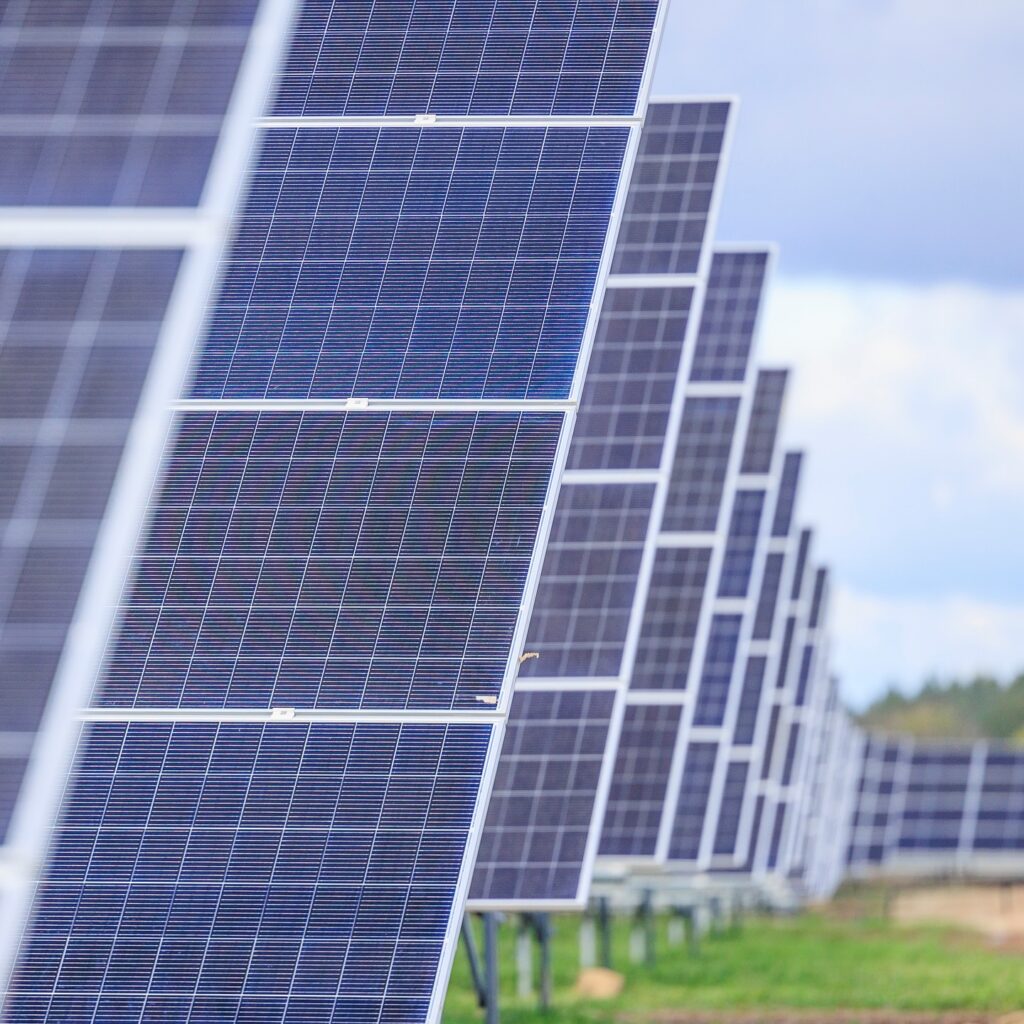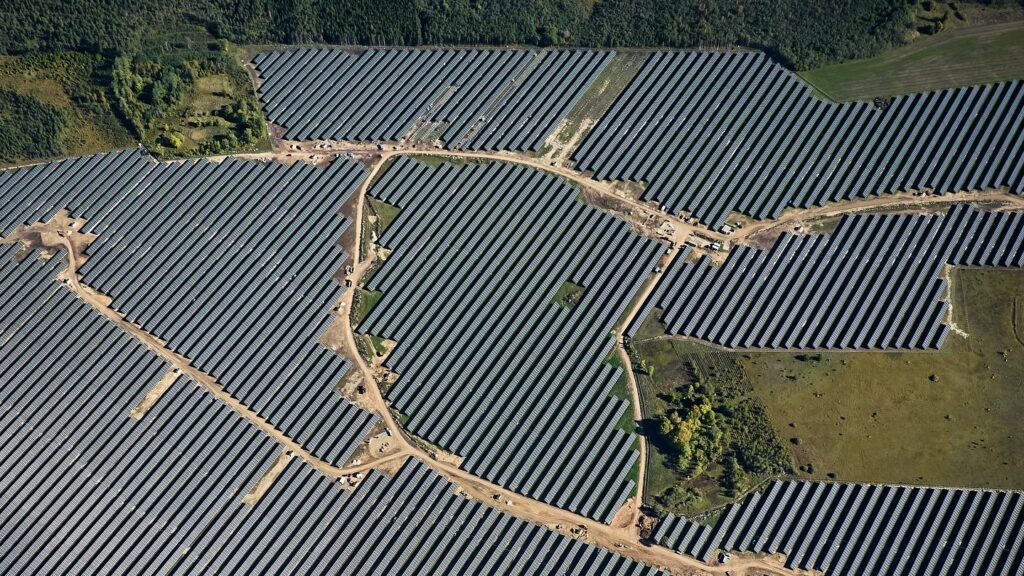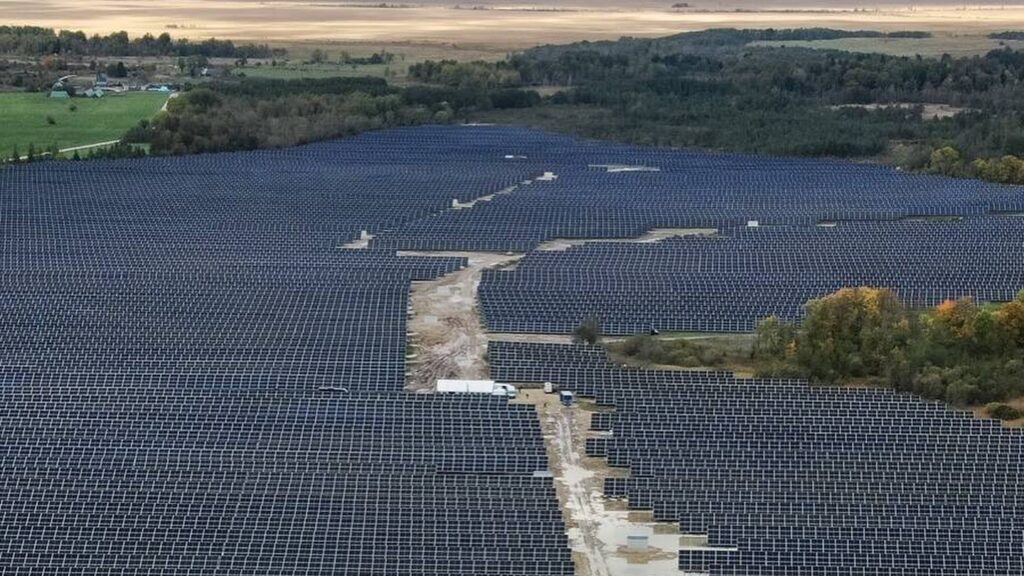The largest solar farm in the Baltics has opened in the tranquil rural countryside of Pärnu County, Estonia; the Kirikmäe Solar Farm, which covers 110 hectares (272 acres) and has a generating capacity of 77.53 megawatts, will provide enough electricity to power 35,000 homes each year.
This ambitious project is the result of a partnership between Estonian energy company Evecon and French asset management firm Mirova, a venture that reflects the country’s growing appetite for renewable energy and its quest for energy independence.
The scale and speed of the project is impressive. Completed in just six months, the Kirikmäe solar park more than doubles Estonia’s current solar capacity. Evecon’s CEO, Karl Kull, hailed it as a “milestone” for the Baltic region.
But the rapid rise of solar energy in Estonia has deeper complexities that go beyond the impressive numbers. Long dependent on oil shale – one of the dirtiest fossil fuels – Estonia is at a crossroads.
A small part of the energy mix
The Kirikmäe solar farm, along with two others inaugurated in recent days, is a crucial step towards the country’s goal of generating all its electricity from renewable sources by 2030. However, oil shale still powers a significant portion of the country’s grid, casting doubt on how quickly this green transition can be achieved. While the sunny figures are encouraging, they represent only a small part of the energy mix, and the real test will be in reducing the country’s reliance on fossil fuels.

Then there is the question of ownership and control. Mirova’s involvement as a major international investor highlights a growing trend: as Estonia builds its renewable energy infrastructure, it is increasingly turning to foreign capital to finance it. Raphael Lance, head of Mirova’s Energy Transition Fund, praised the project as a contribution to the decarbonisation of the Baltics. While such investment is necessary to build large-scale infrastructure, reliance on international partners raises concerns about local benefits and control.
The community aspect of the project adds another layer of complexity. Evecon has introduced a voluntary community benefit model, offering 0.6% of the solar park’s revenue to the local community. While this is a positive gesture, it pales in comparison to compensation schemes for other renewable energy projects such as wind farms. So far, solar projects in Estonia have largely escaped the political and local opposition that wind farms often face, but as more solar farms dot the landscape, tensions may rise over who really benefits from these developments.
Estonia sixth in the EU for solar panel capacity per capita
Yoko Alender, Estonia’s climate minister, has championed the country’s progress, pointing to Estonia’s leap to sixth place in the EU for solar panel capacity per capita. “In 2020, we had almost no solar capacity,” she said. “Now solar energy provides the most affordable electricity, and it’s crucial for achieving our 2030 goals.”

While solar energy is a far cleaner and more sustainable option than fossil fuels, it doesn’t come without its environmental impacts. Solar farms can disturb habitats and pose risks to birds. Mining materials for solar panels can cause environmental damage – and disposing of old panels containing toxic materials poses recycling challenges.
Estonia’s road to decarbonisation remains long and winding. While Kirikmäe stands as a beacon of what Estonia could achieve in its renewable future, the broader challenge is to balance the rush for green energy with careful, sustainable growth.

